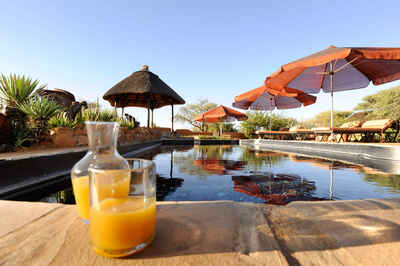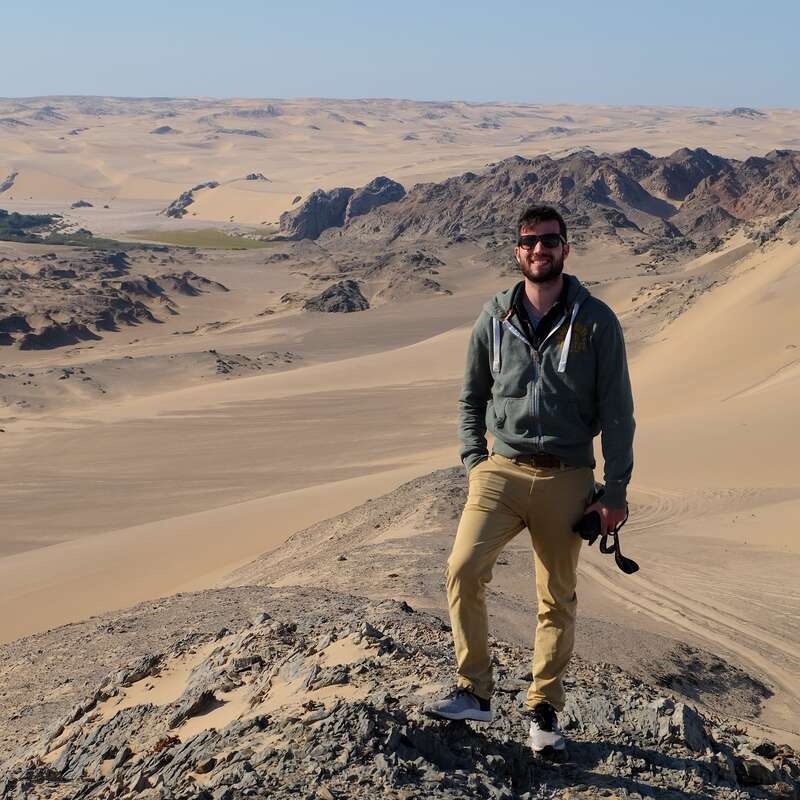About Eningu Clayhouse
Creative, colourful and warm, Eningu Clayhouse appears fully at one among the bush-covered dunes of the Kalahari.
While the painted buildings, constructed from 120,000 hand-crafted clay bricks, offer more than a hint of Moorish climes, the deep thatch casting shadows across the desert sand is pure sub-Saharan.
Inside, all is cool, the smooth concrete surfaces topped with cushions, and a breeze wafting through the gauze windows, while extra blankets and hot-water bottles protect against plummeting night-time temperatures. Carved wooden statues guard the verandas, hand-painted porcupines wander across the bedroom floors and quirky hanging tripods host your morning tea and coffee. Bettina Spoerndli’s lodge is far from corporate!
Here, just an hour’s drive from Windhoek, you can bask in the silence, dining on fresh, often home-grown ingredients and lingering over a bottle of wine from the underground cellar. From the small bird hide, watch out for masked weaver birds while keeping an eye on the waterhole – where porcupines seek out kitchen scraps after dark.
If exercise beckons, take a picnic along the botanical hiking trail, or try your hand at archery, volleyball or badminton. Then soothe those aching limbs in the hot tub, or cool down in the pool. Above all, Eningu invites relaxation.
Our view
Eningu Clayhouse is one of Namibia's more unusual and arty lodges, and Bettina's warm hospitality and the total silence of the Kalahari that surrounds you are just fantastic. We like the rustic but comfortable atmosphere and the beautiful hand-painted touches in the rooms. Although it’s often used as a first or last night on a self-drive safari around Namibia, we think that it's certainly worth two nights if you have the time.
However, don't come expecting big game on the drives (if you're lucky you'll see kudu and steenbok!), or any real schedule of activities. Think of Eningu as a place to relax and unwind.
Accommodation
9 rooms
Children
Fine for all ages
Open
All year
Activities

4WD Safari

Birdwatching

Private activities

Self-guided walking
Traveller reviews of Eningu Clayhouse
71 real, un-edited reviews from Expert Africa's travellers.
Arrived 6 Nov 2024, 2 nights
"Eningu Clayhouse review"
Overall rating: Excellent
Arrived 18 Aug 2024, 2 nights
"Eningu Clayhouse review"
Overall rating: Excellent
Arrived 5 Dec 2023, 1 nights
"Eningu Clayhouse review"
Overall rating: Excellent
Arrived 29 Sep 2023, 2 nights
"Eningu Clayhouse review"
Overall rating: Good
Arrived 6 Oct 2023, 1 nights
"Eningu Clayhouse review"
Overall rating: Excellent
Arrived 24 Sep 2023, 1 nights
"Eningu Clayhouse review"
Overall rating: Good
Arrived 24 Sep 2023, 1 nights
"Eningu Clayhouse review"
Overall rating: Good
Arrived 13 Sep 2023, 1 nights
"Eningu Clayhouse review"
Overall rating: Good
Arrived 15 Dec 2022, 1 nights
"Eningu Clayhouse review"
Overall rating: Excellent
Arrived 5 Oct 2019, 1 nights
"Delightful place to start our Namibian Trip"
Overall rating: Excellent
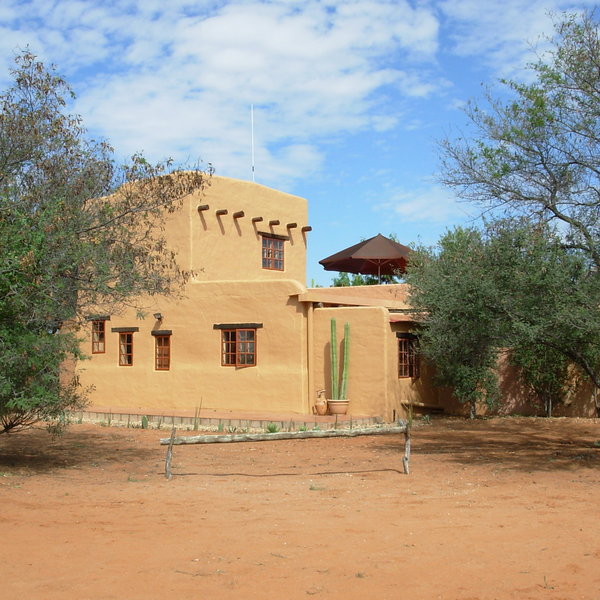
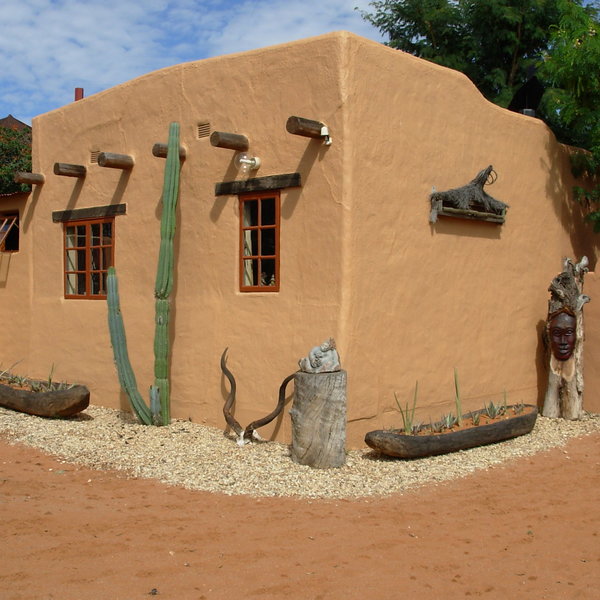
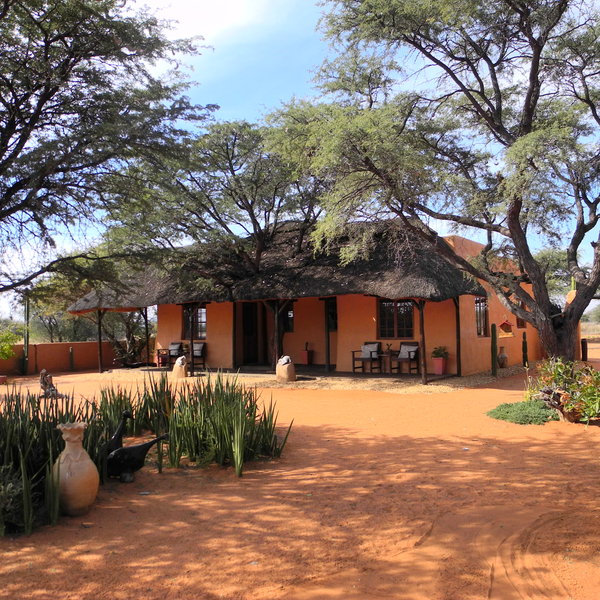
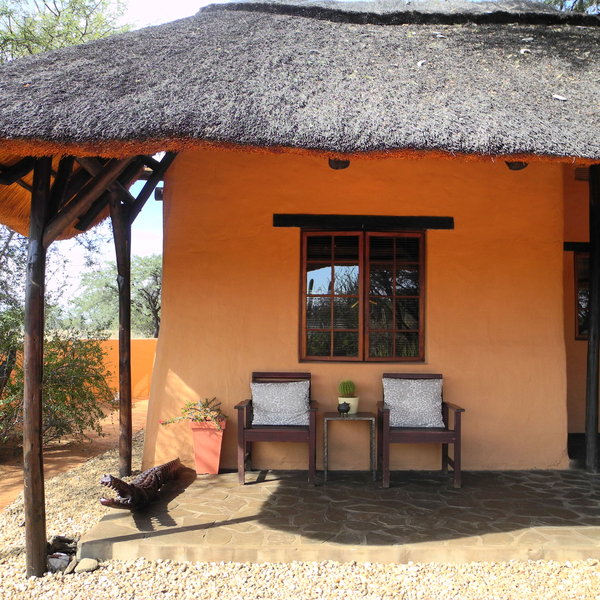
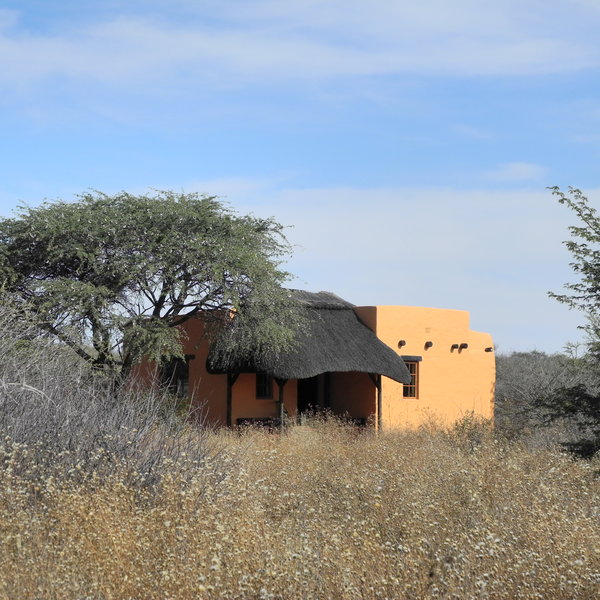
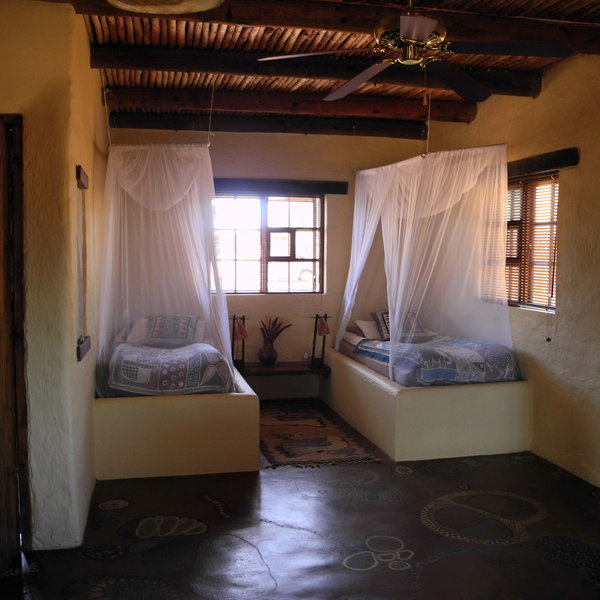
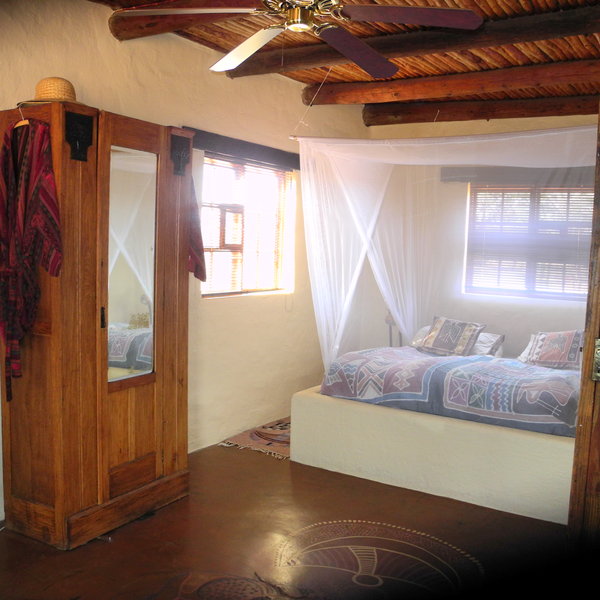
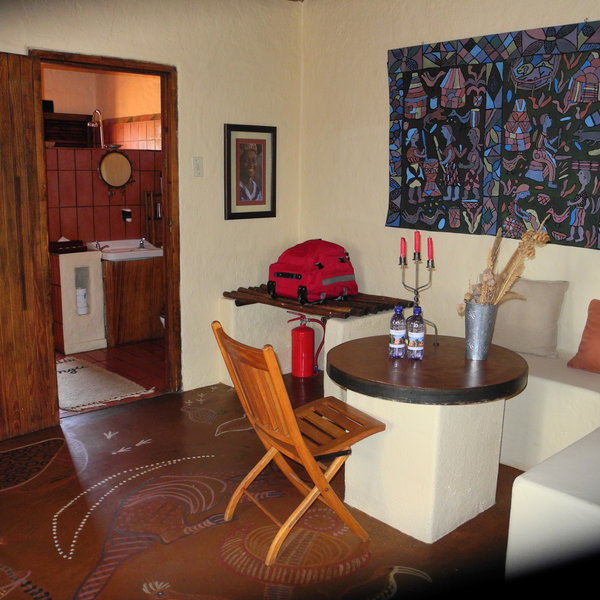
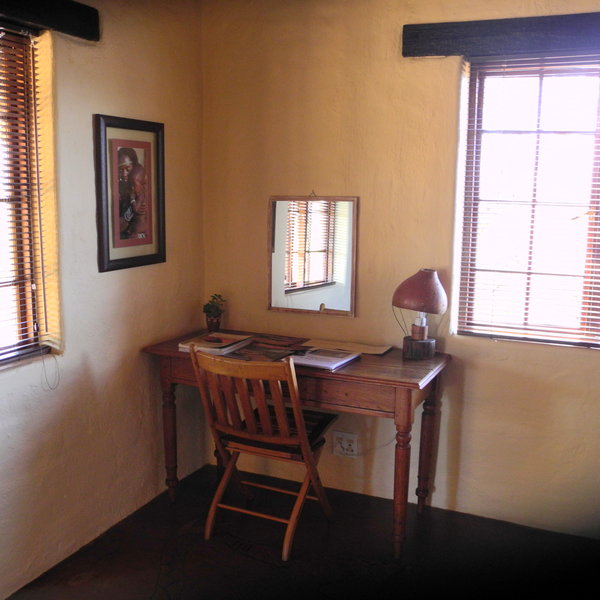
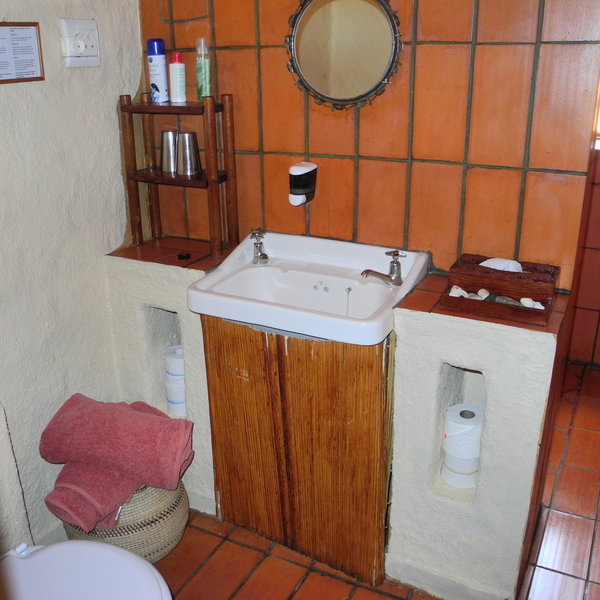
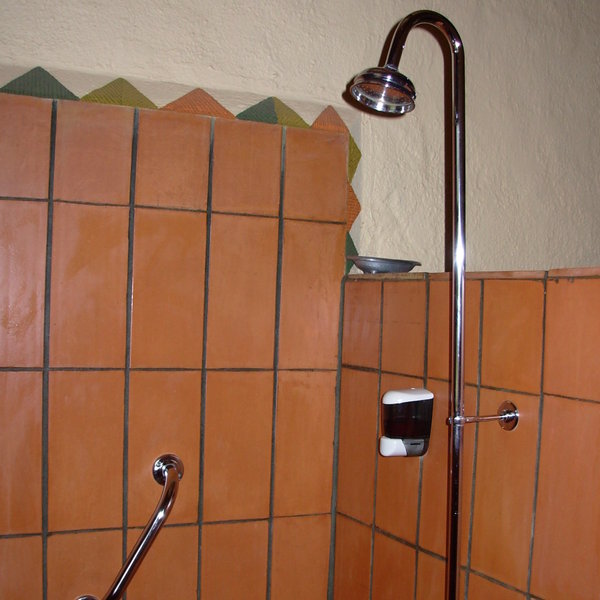
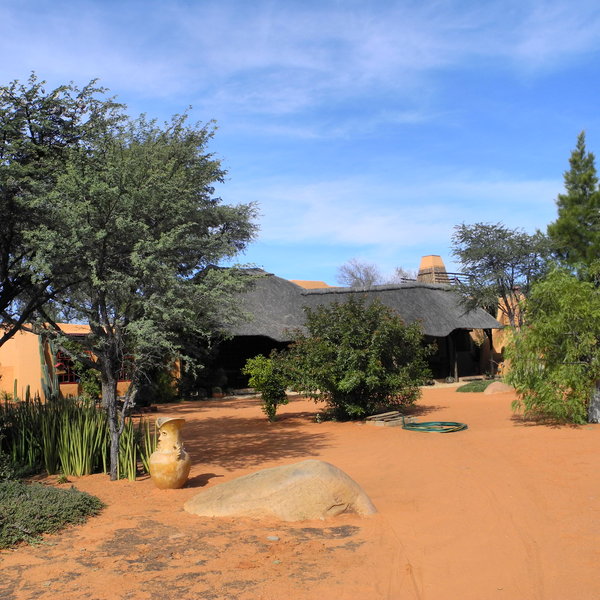
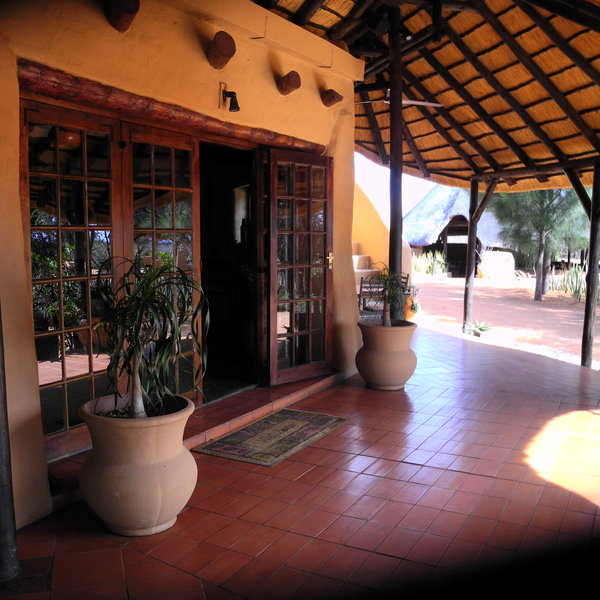
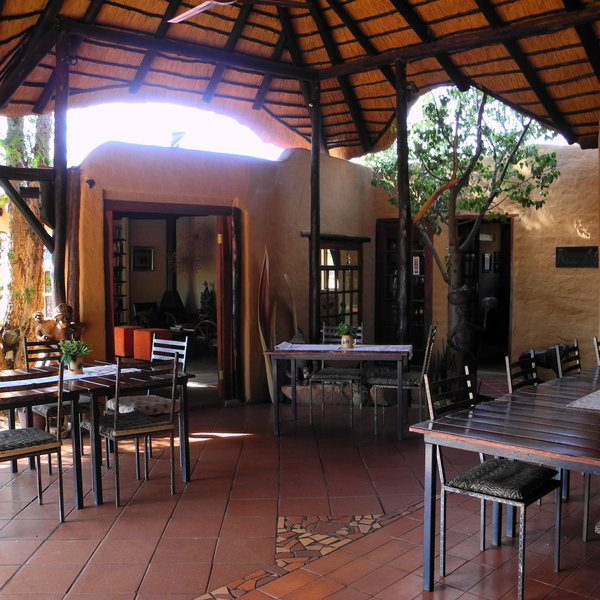
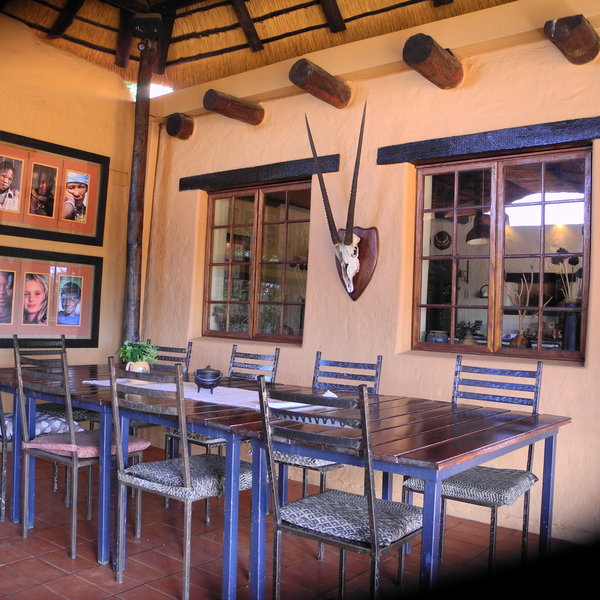

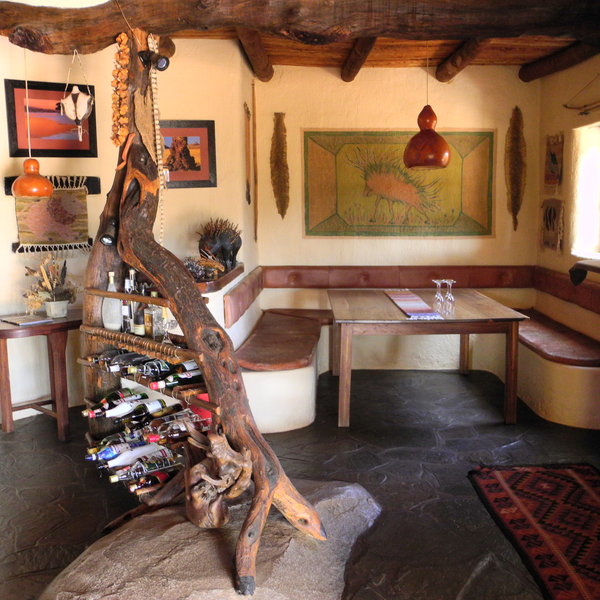
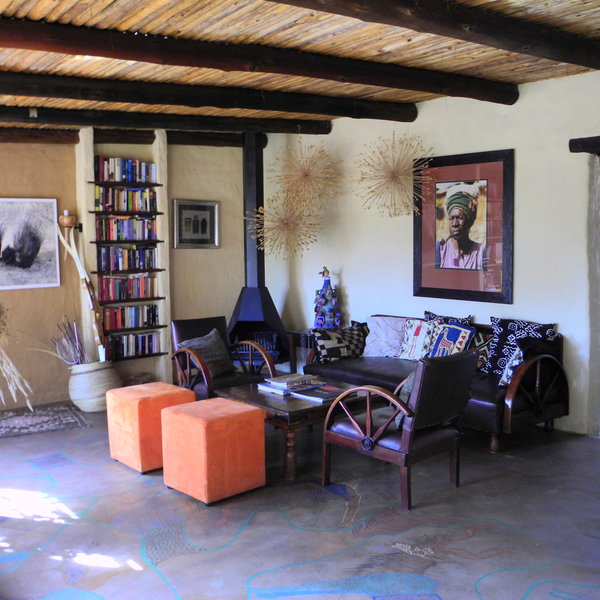
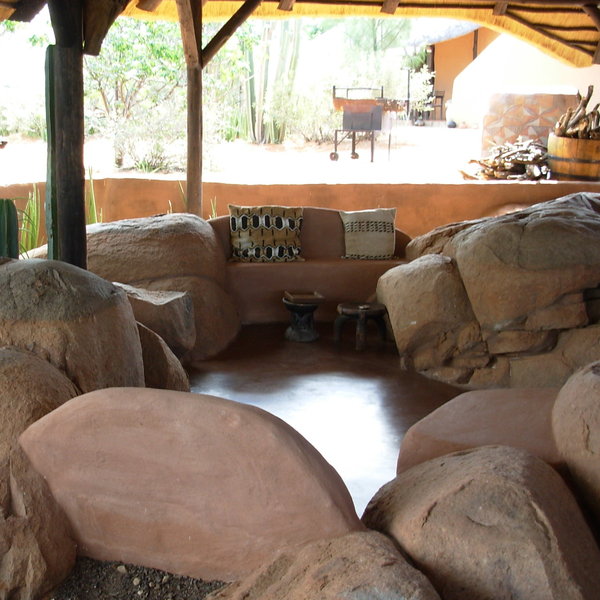
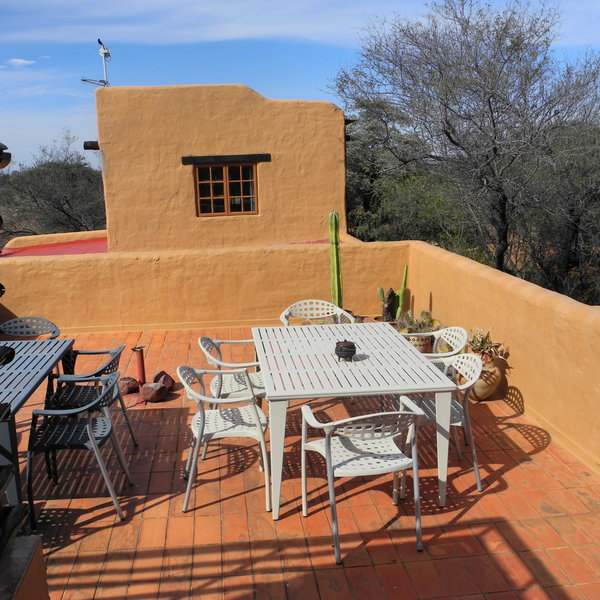
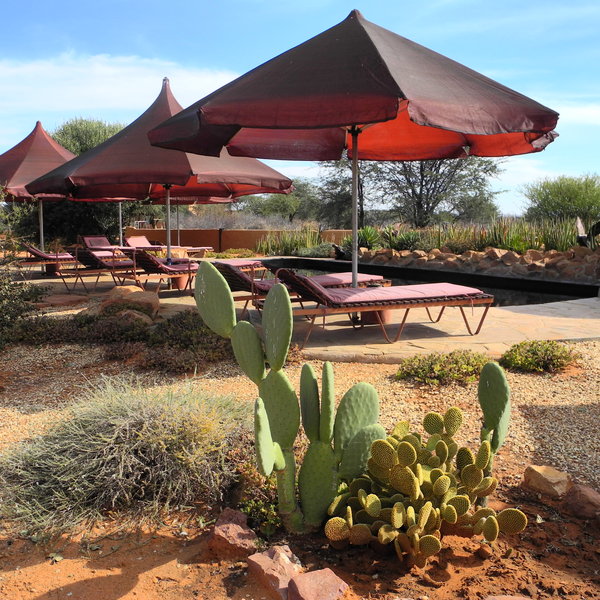
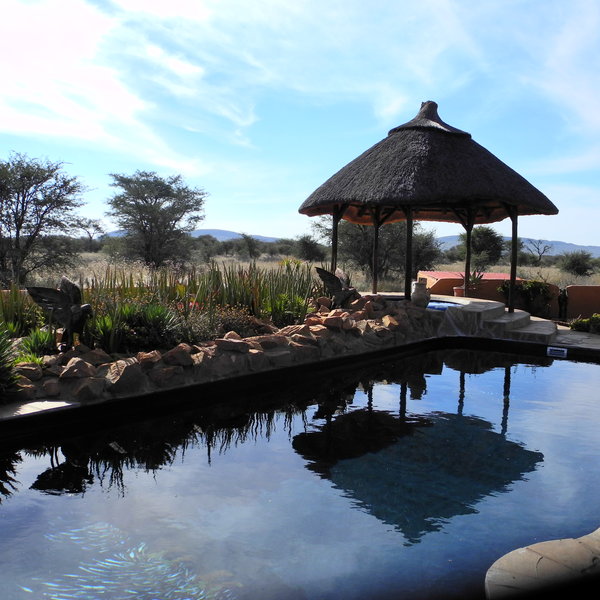
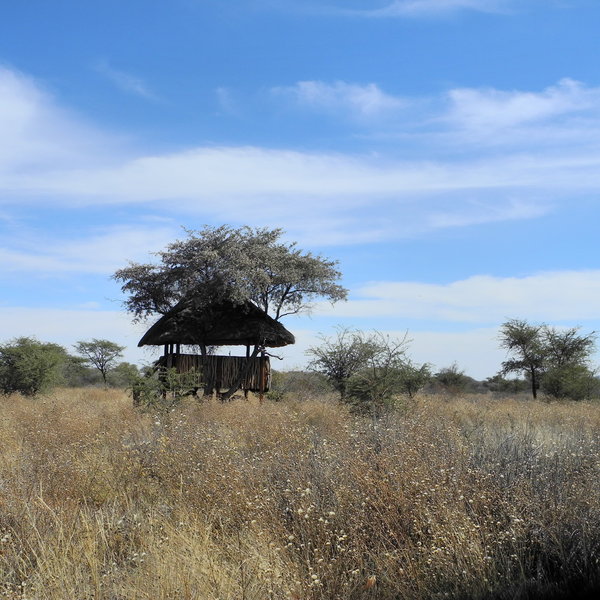
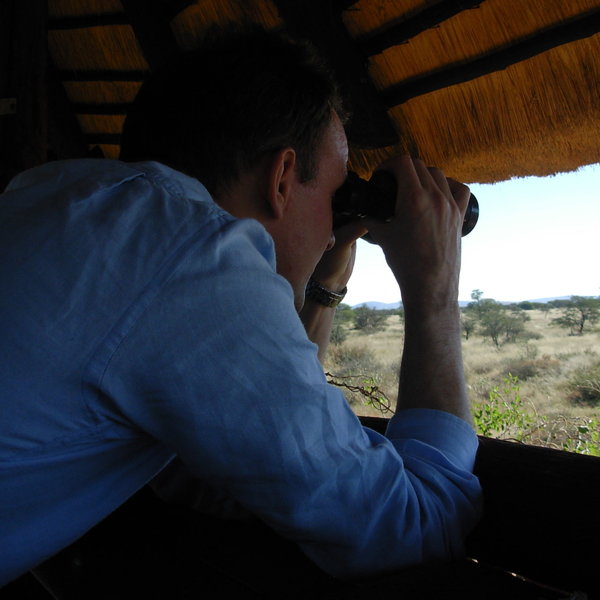
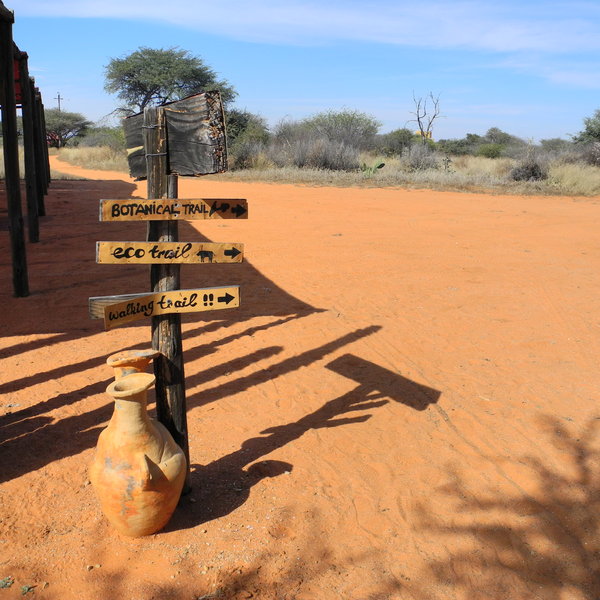
Expert Africa's gallery
When we travel we take lots of photos ourselves to give you a real and un-edited view of the trips. See our 66 pictures of Eningu Clayhouse to get the candid view.
View galleryEningu Clayhouse: Our full report
The distinctive Eningu Clayhouse Lodge stands in a bush savannah environment of the Namibian Kalahari.
A little over an hour's drive south-east of Windhoek's international airport, the 65-hectare farm is owner-run by Bettina Spoerndli, its handmade terracotta-coloured bricks blending in to the surrounding red sands.
The terracotta and red theme runs throughout the nine rooms at Eningu, most of them set up in pairs in low buildings topped by heavy thatched roofs. Some share a thatched porch, set with a wooden table and chairs, and often adorned with a sculpture or two – befitting a lodge that was founded by two artists. Don’t miss the red floor inside, too, where you'll discover hand-painted porcupines.
The rooms themselves are spacious if fairly sparsely furnished, their moulded-stone bed frames and seating topped by cushions and coloured fabrics. Twin mattresses sit on the large bases, enveloped by a mosquito net, and a built-in bench could double as a bed for a small child. A ceiling fan comes into its own in summer, and an electric wall heater for chilly winter nights.
In each en-suite bathroom, with a hot shower, washbasin and flushing toilet, maroon tiles continue the theme of the Kalahari sand that runs through the lodge and its surroundings. Quite a few fixtures and fittings feature old or recycled elements, like the pipes used in the towel rails, or the tin-can surround to the mirror. However, the most unusual piece of furniture is back in the bedroom: a small, triangular table suspended between three branches, connected rather like an extended tripod, and housing the tea/coffee-making facilities.
The ninth room at Eningu is a stand-alone family room sleeping up to five people: two adults and three children. As well as being larger than the other rooms, it is much more private, with its own sitting room and even a little garden area with hammocks.
Guests at Eningu Clayhouse have a choice of lounge and dining areas. The main building, hung with paintings, incorporates a small lounge with an adjacent library area, and an intimate restaurant, where a wine-rack supported by a triangle of natural branches is used as a bar. In the winter months, a crackling fire is lit to stave off the cold.
Stairs lead to an open-air rooftop terrace, a popular spot for sundowners, although the surrounding trees significantly obscure the view. Outside,you’ll find a shaded "stoep" or veranda, its walls covered with an artistic collection of photographs of people.
During the summer, you can dine in the partially sunken thatched "lapa". This has open sides, and is built around the rocks, which help to keep it nice and cool during the day. More stairs lead down to the climate-controlled underground cellar, which houses a good selection of wines, mostly from South Africa.
The lodge has a small bird "hide" and a waterhole, where kitchen scraps are left out to attract the local porcupines. Eningu places a strong emphasis on the environment, with much of the other waste, including water, also recycled.
Eningu is well suited to families, with activities such as archery, volleyball and badminton on site. There is a large, sparkling swimming pool too, and a small hot tub connected to the main pool which, when we last visited in April 2018, we were told is turned on in the winter time. Inside there are books and board games, and a few pairs of binoculars for guests to use.
Away from the lodge, you can explore marked hiking trails on your own, or with a guide from the lodge. Among these is their botanical hiking trail, which leads through different zones of vegetation – each marked by an explanatory information board – and makes a good day out with a lovely picnic lunch.
A must for those interested in art is a visit to the sculptor Dörte Berner, whose home is about a 15-minute drive away. Bettina can arrange for a private tour of her exhibition, which is well worth it. If you stay for a few days then visits to local craftspeople and a nature drive around Eningu's own slice of the Kalahari are also possible, as well as a tour of a nearby farm.
Activities
4WD Safari
Birdwatching
Private activities
Self-guided walking
Families & children
- Attitude towards children
- Children with their parents are welcome at Eningu Lodge.
- Property’s age restrictions
- There is no age restriction
- Special activities & services
- No special activities and services as such for children but the lodge has badminton, archery, a swimming pool, and walking trails that children can enjoy, of course under adult supervision.
- Equipment
- Baby cots are available on request.
- Generally recommended for children
- Yes
- Notes
- Children must be under parental supervision at all times.
Food & drink
- Usual board basis
- Half Board
- Food quality
- Although we did not get a chance to eat at the lodge on our last visit in April 2018, the food at Eningu has been consistently delicious on our previous stays.
For breakfast we have in the past been served fresh fruit, coffee/tea, cereal, yoghurt, various meats and cheeses and fresh homemade bread. Eggs and bacon were available on request.
The lunch menu included a selection of salads, from which we particularly recommend the tasty smoked meat and horseradish salad.
Homemade cake is served with teas and coffee in the afternoon.
Dinner is a set three-course meal served from 7.00pm. In May 2016 we started with deep-fried couscous and salad, followed by oryx stroganoff, and rounded off by apple puff pastry. - Dining style
- Individual Tables
- Dining locations
- Indoor and Outdoor Dining
- Further dining info, including room service
- No
- Drinks included
- Tea and coffee are complementary, everything else costs extra.
Our travellers’ wildlife sightings from Eningu Clayhouse
Since mid-2018, many of our travellers who stayed at Eningu Clayhouse have kindly recorded their wildlife sightings and shared them with us. The results are below. Click an animal to see more, and here to see more on our methodology.

50% success

25% success

17% success

17% success

0% success

0% success

0% success

0% success

0% success

0% success
Getting there
- Location
- Southern Namibia, Namibia
- Ideal length of stay
- Eningu can be used for a one-night stop, at the end or beginning of your trip, but two nights is a better length of time to spend here.
- Directions
- Eningu Clayhouse is about 70km south of Windhoek International Airport, or 110km from the centre of Windhoek
- Accessible by
- Self-drive or Fly-and-Transfer
Communications
- Power supply notes
- The lodge uses a combination of solar and mains power.
- Communications
- There is good cellphone reception at and around the main building of the lodge, and free WiFi in the main area.
- TV & radio
- Eningu Lodge does not have TVs or radios.
- Water supply
- Borehole
- Water supply notes
- The bathrooms have flush toilets, and hot and cold running water.
Health & safety
- Malarial protection recommended
- Yes
- Medical care
- There is a first-aid box at the lodge for minor complaints. The closest doctor or hospital is in Windhoek.
- Dangerous animals
- Low Risk
- Security measures
- There are no security guards at Eningu Lodge.
- Fire safety
- There is a fire extinguisher in every room.
Useful info
- Disabled access
- On Request
- Laundry facilities
- There is a laundry service available, at an extra cost.
- Money
- Currency exchange is not possible at Eningu Lodge. There are no safe deposit boxes in the rooms, but valuables can be stored in the office.
- Accepted payment on location
- Eningu Clayhouse Lodge accepts Visa and Mastercard, as well as cash payments in South African rand and Namibian dollars.
Plan and book your trip with Expert Africa
All of our trips are tailor-made, so we'll always adapt them to suit you. Talk to an Expert and let us plan and arrange your perfect trip.

Talk to an Expert
Call or email us now! We’ll match you with the Specialist in our team who is best suited to help you. Then together we can start planning your trip.

Set up your itinerary
Based on our experience and your ideas, your specialist will create a detailed, costed itinerary. We’ll refine it together, until we have a trip that you’re perfectly happy with.

Prepare for your trip
The same Specialist will make the seamless arrangements for your trip, send you detailed travel documents, and be available to answer any questions before you depart.

Travel with peace of mind
After you set off, you’ll be cared for by our partners in Africa, most of whom have worked with Expert Africa for decades. And if you ever need us urgently, we’re available 24/7.

When you return
We love to learn about your trip, and so will always be grateful if you’ve the time to give feedback to your Specialist when you return.
Eningu Clayhouse's location
Look closer at the environment and surroundings of Eningu Clayhouse.
Other lodges in Southern Namibia
Alternative places to stay in this same area.
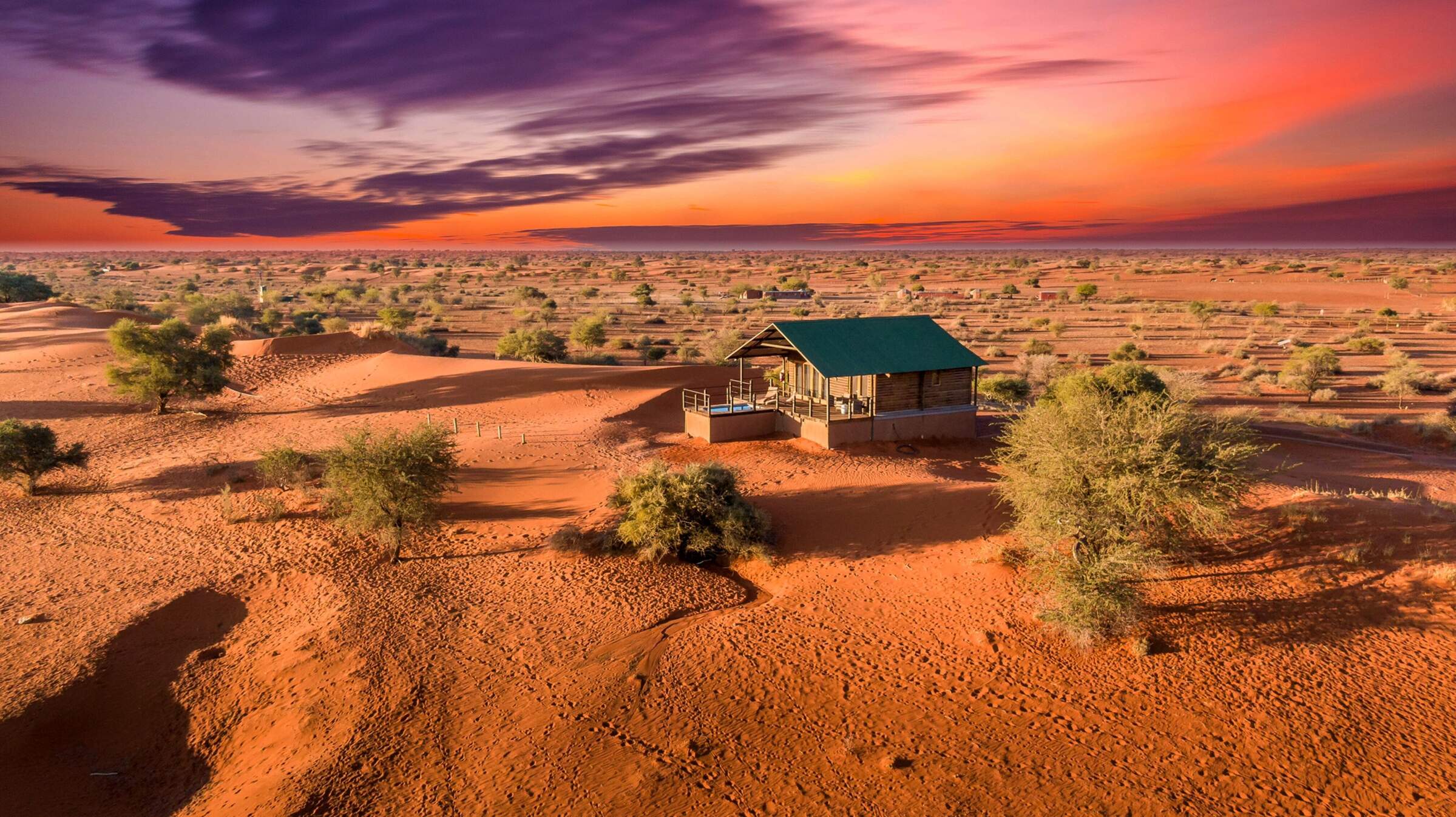
Bagatelle Game Ranch
Bagatelle is a welcoming guest farm in the Kalahari. Visit as a stopover heading south or to enjoy the photogenic red dunes and varied wildlife.
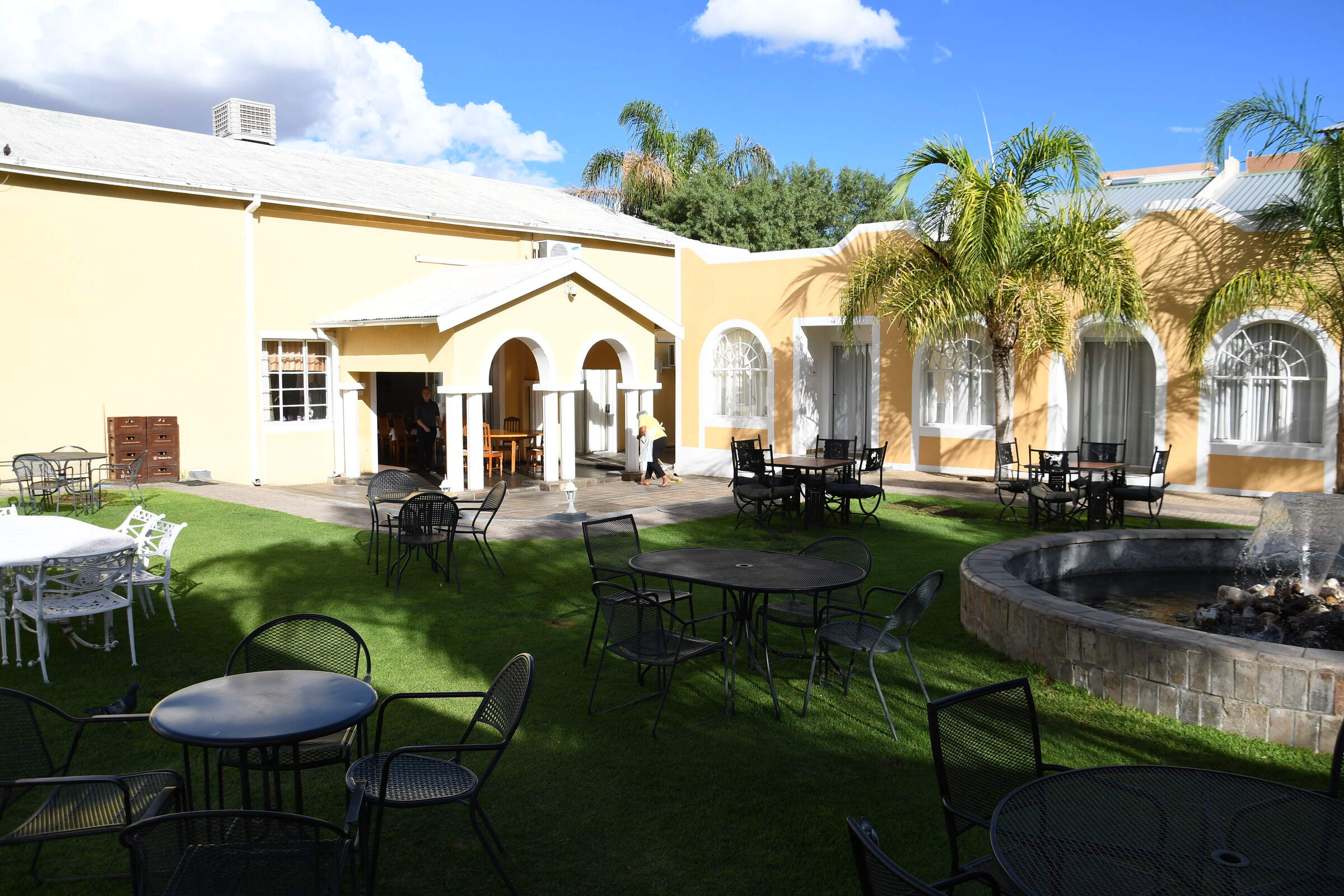
Central Lodge
Central Lodge offers clean, fresh and comfortable accommodation surrounded by a well-kept garden in the centre of Keetmanshoop.
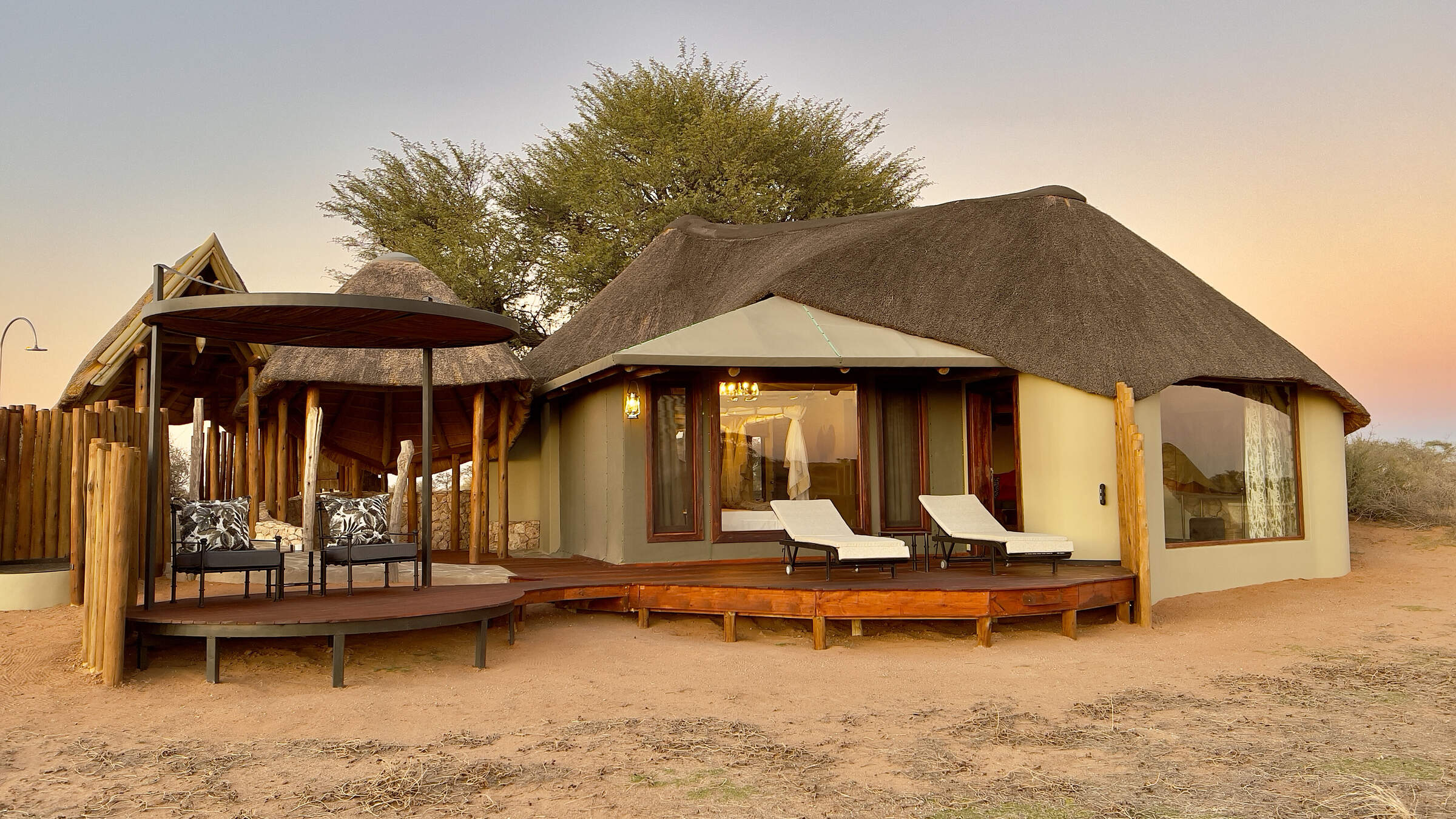
Kalahari Red Dunes
A good stop between Windhoek and Fish River Canyon, Kalahari Red Dunes is set around a dry lake on a private reserve, with excellent walking opportunities.
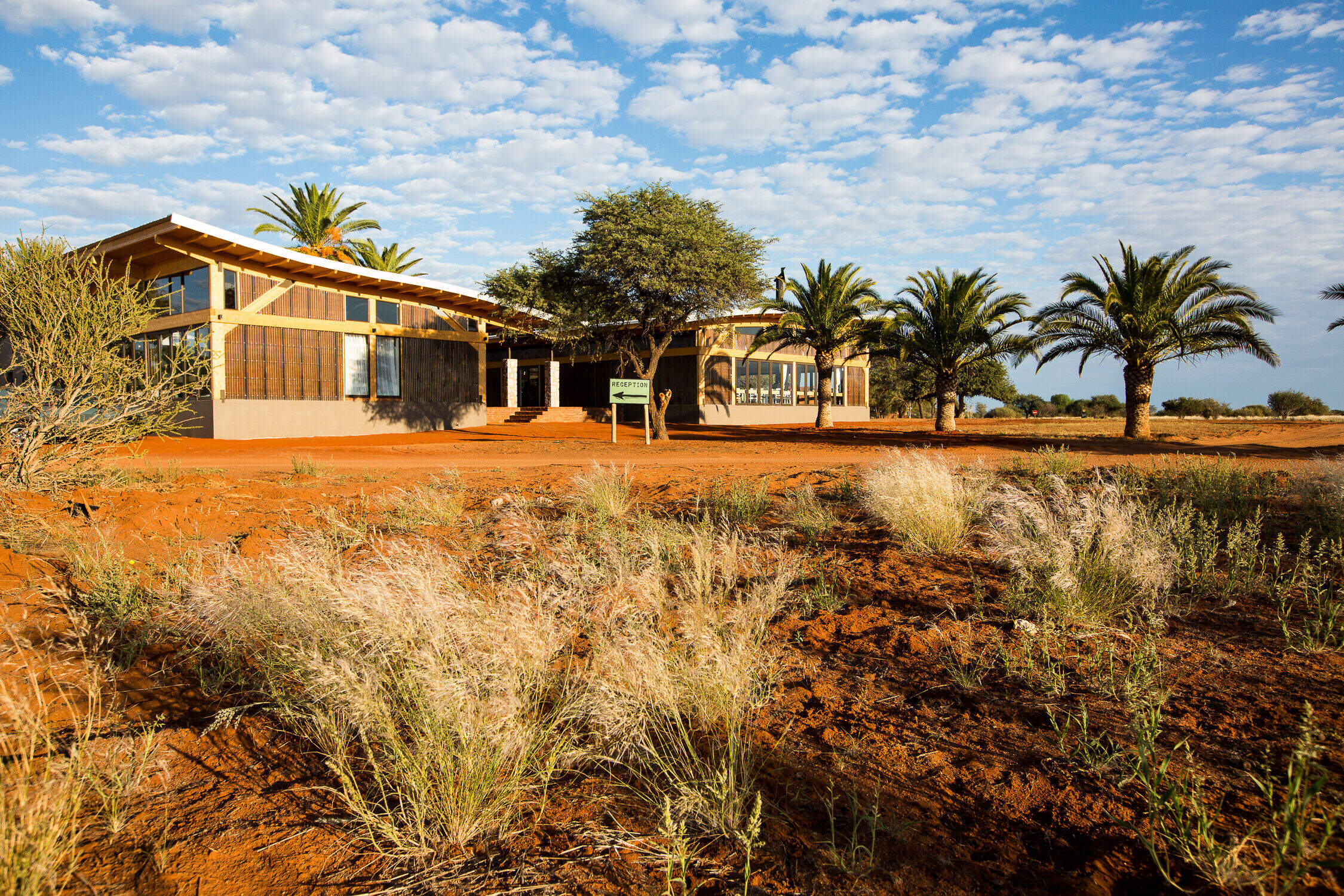
Kalahari Anib Lodge
Kalahari Anib Lodge is a comfortable stop between Windhoek and Fish River Canyon. Expect stunning Kalahari scenery, two swimming pools and lots of space.
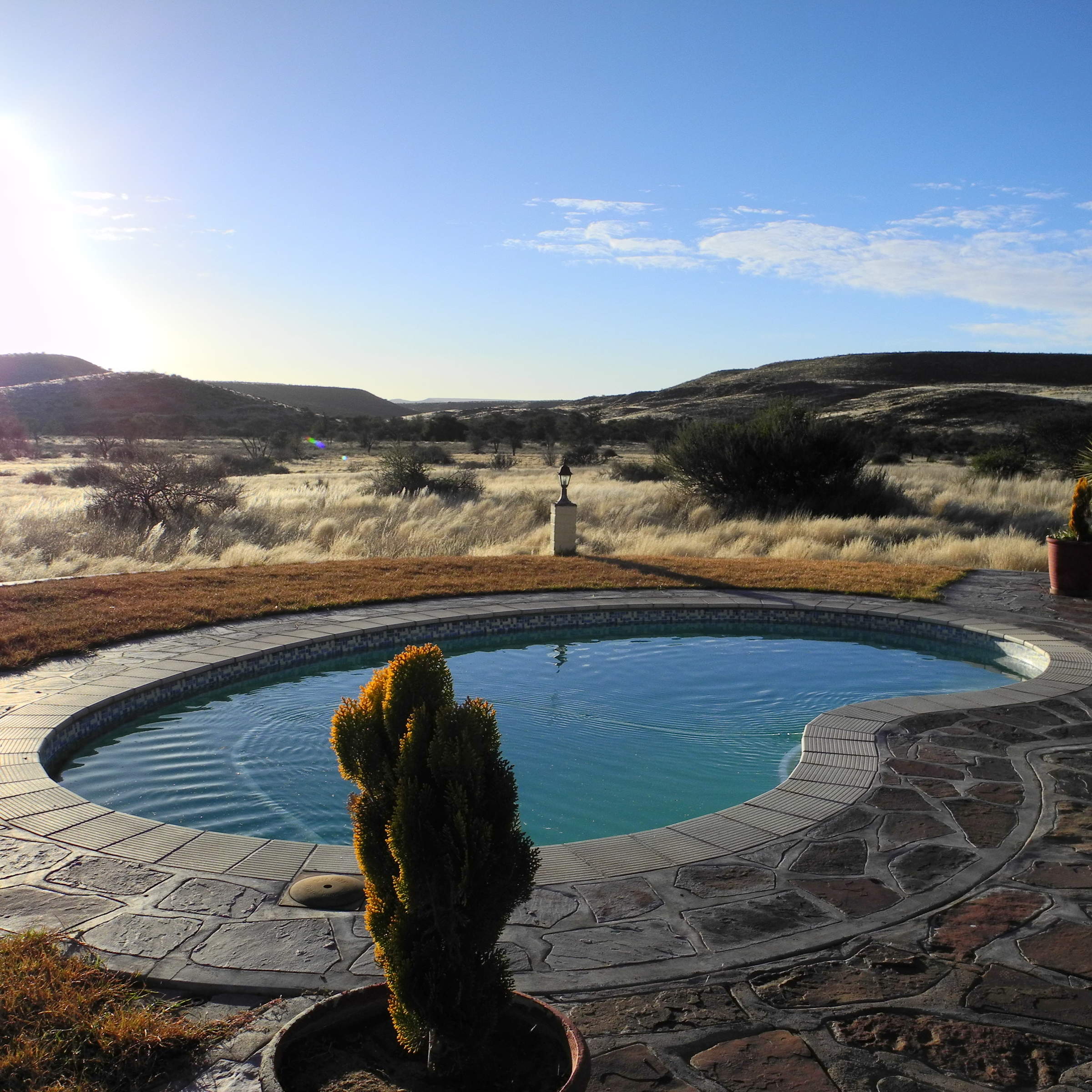
Dabis Guest Farm
For good farm hospitality, wholesome cooking and an interesting farm drive, Dabis makes a great stop en-route from Lüderitz to the Sesriem area.
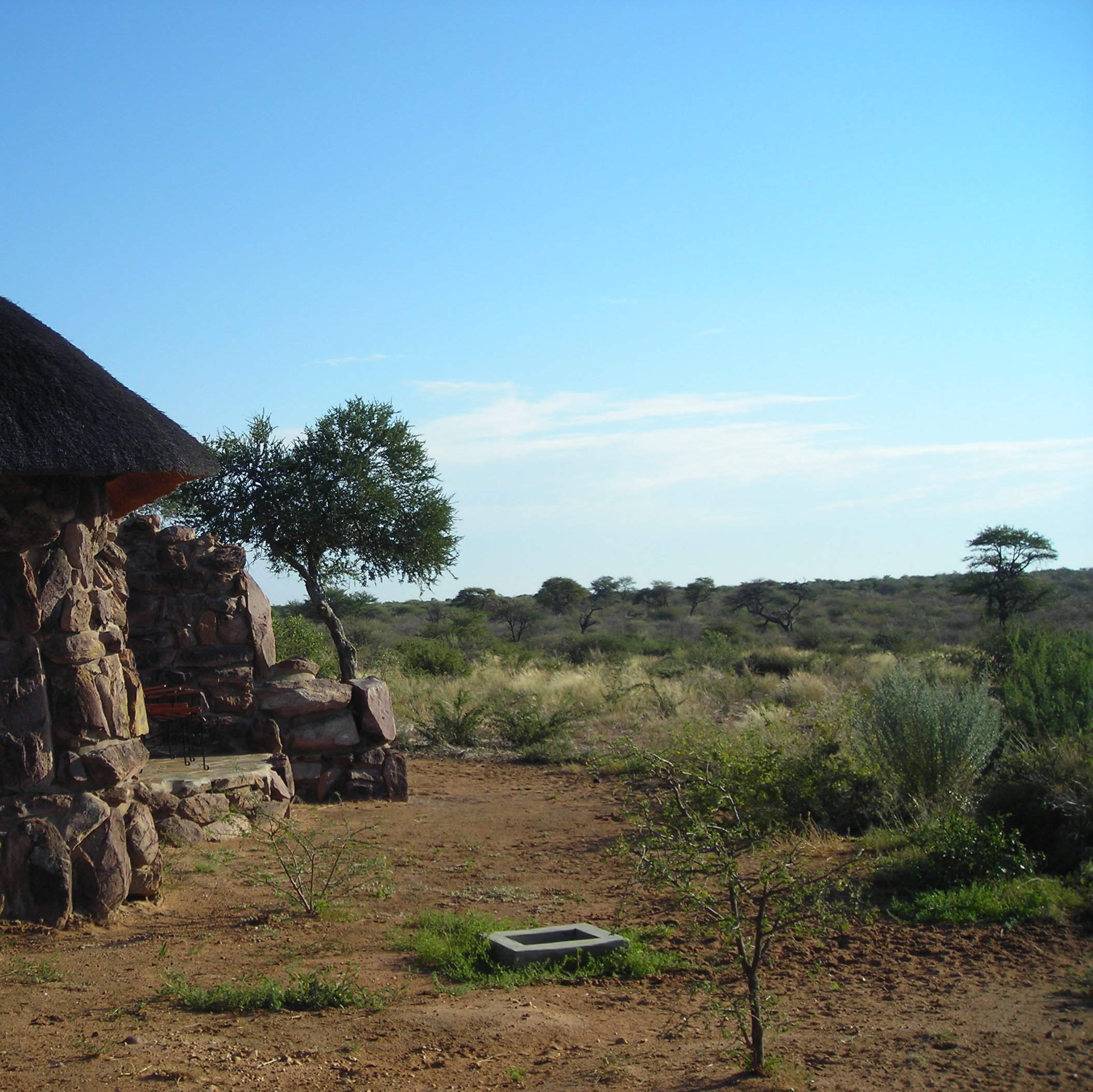
Kalahari Bush Breaks
Kalahari Bush Breaks, situated on the edge of the Kalahari Desert, is a perfect stop-over whilst driving between Namibia and Botswana.
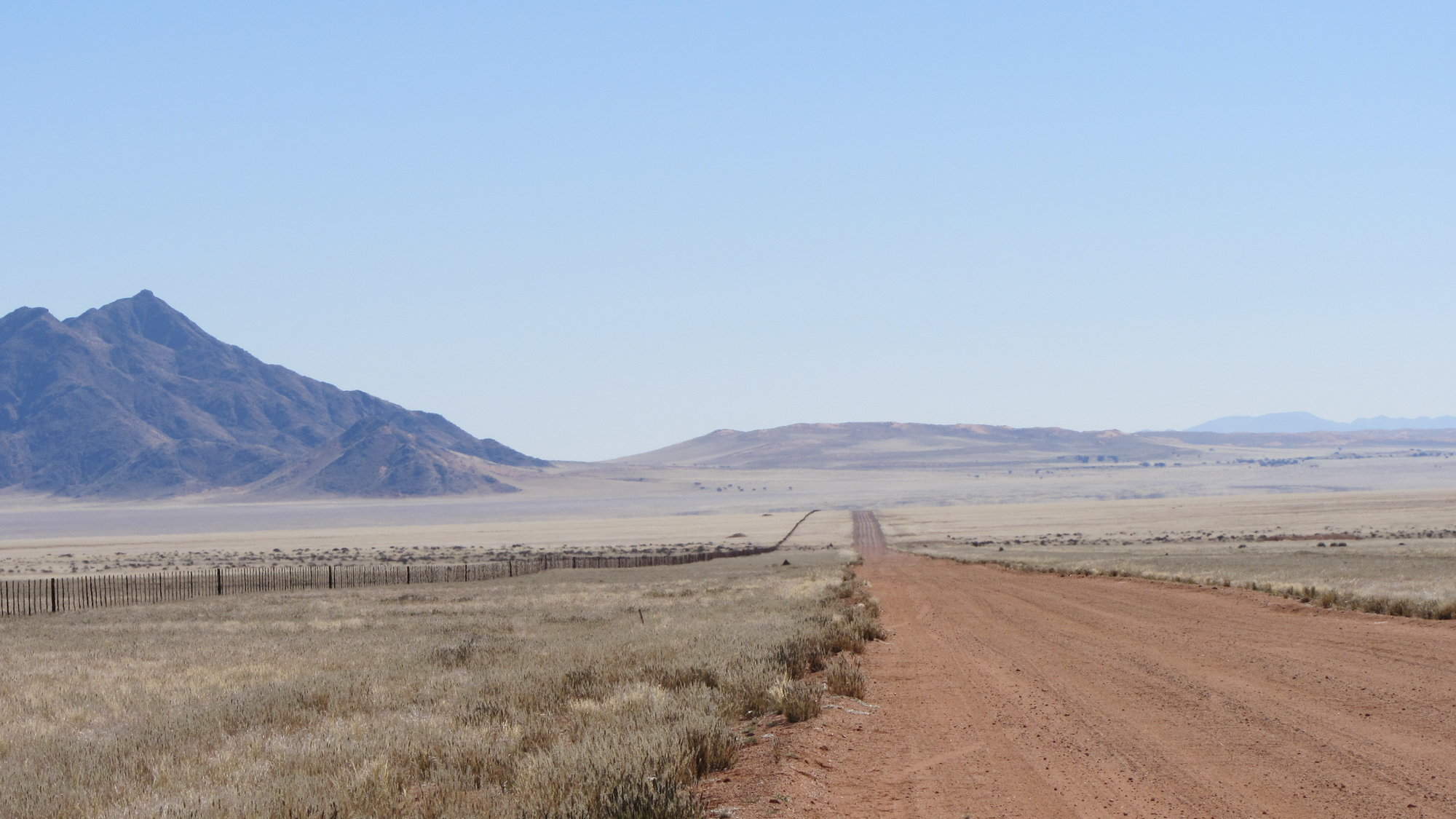
Hotel Helmeringhausen
Hotel Helmeringhausen is a unique hotel in the heart of southern Namibia's farming district and makes a good stopover option.
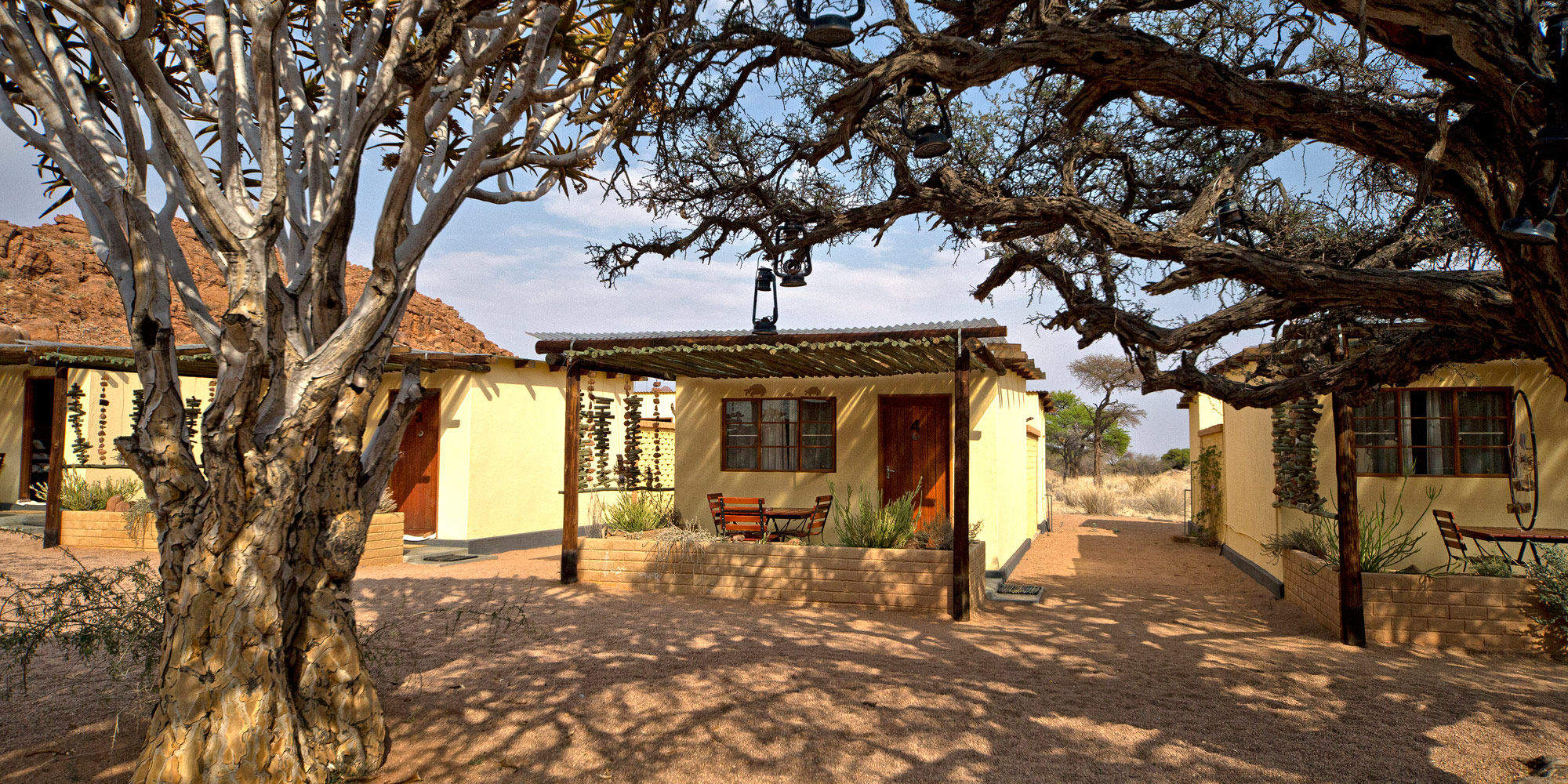
Namtib Desert Lodge
A charming owner run lodge, located off the scenic D707, Namtib Desert Lodge is a convenient stop en route from the south to Sossusvlei.
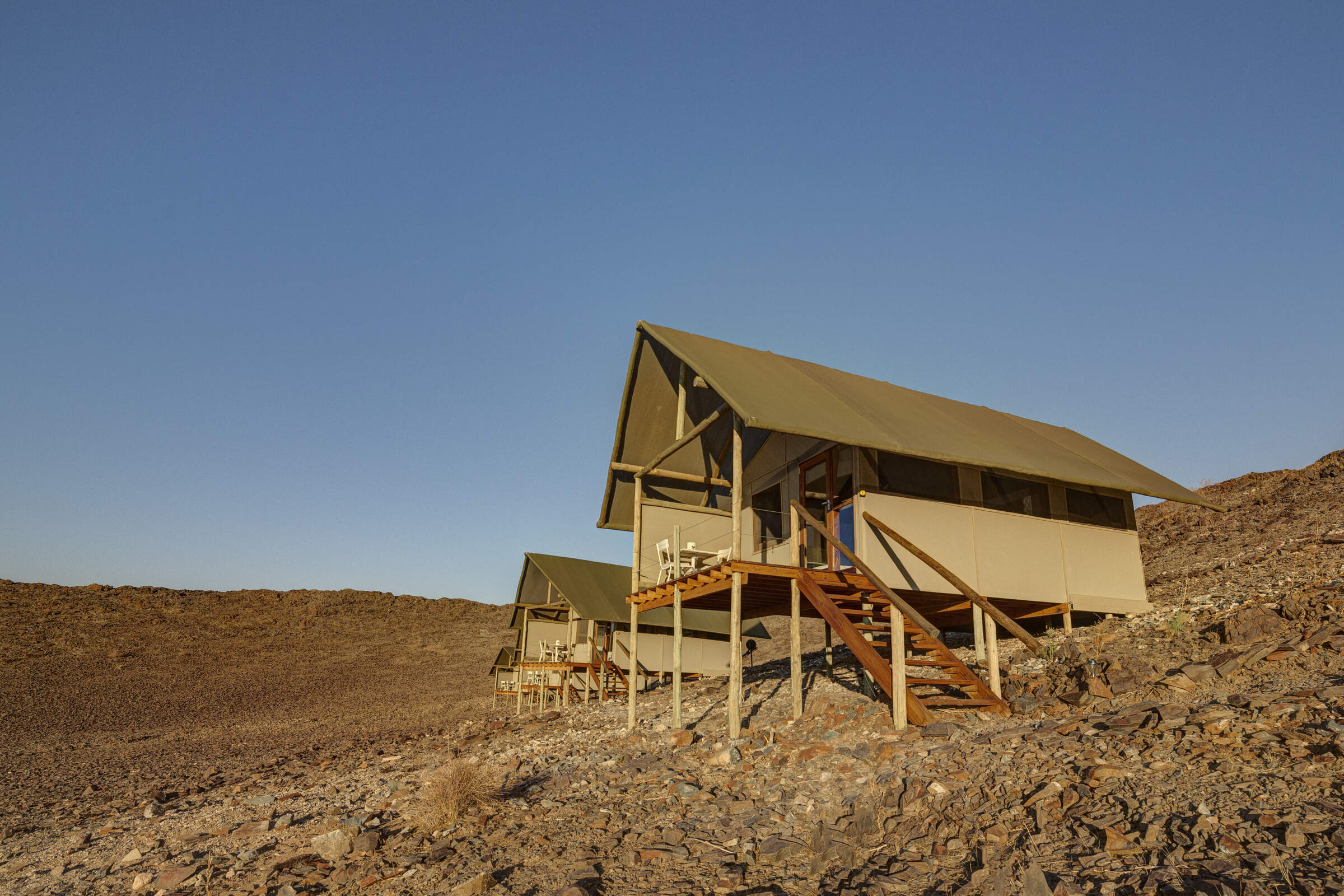
Kanaan Desert Retreat
The tented Kanaan Desert Retreat offers a range of activities against the beautiful backdrop of the Namib Desert.
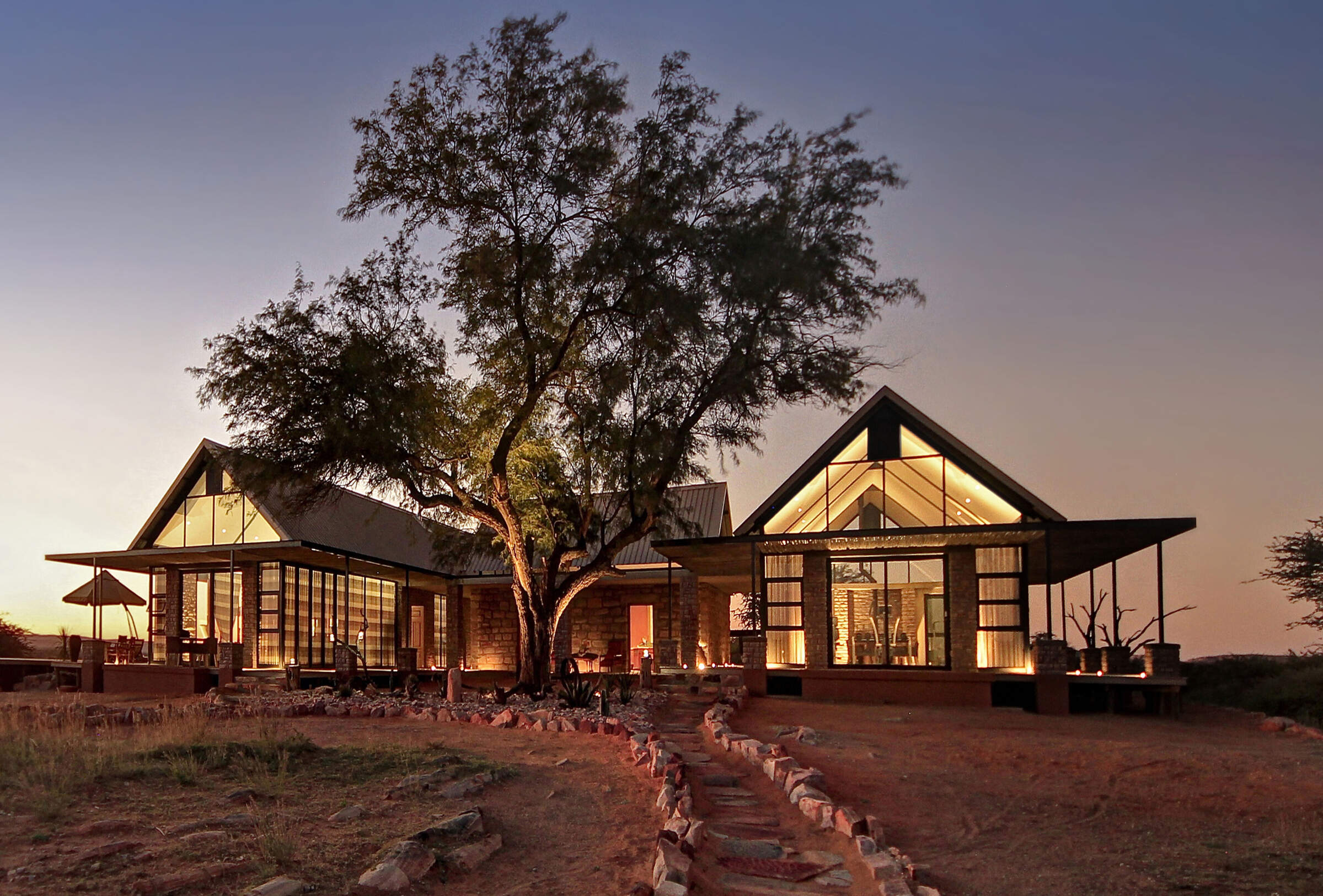
Otjimbondona
Otjimbondona Kalahari is a luxurious, peaceful and relaxing lodge conveniently located close to Windhoek's International Airport.
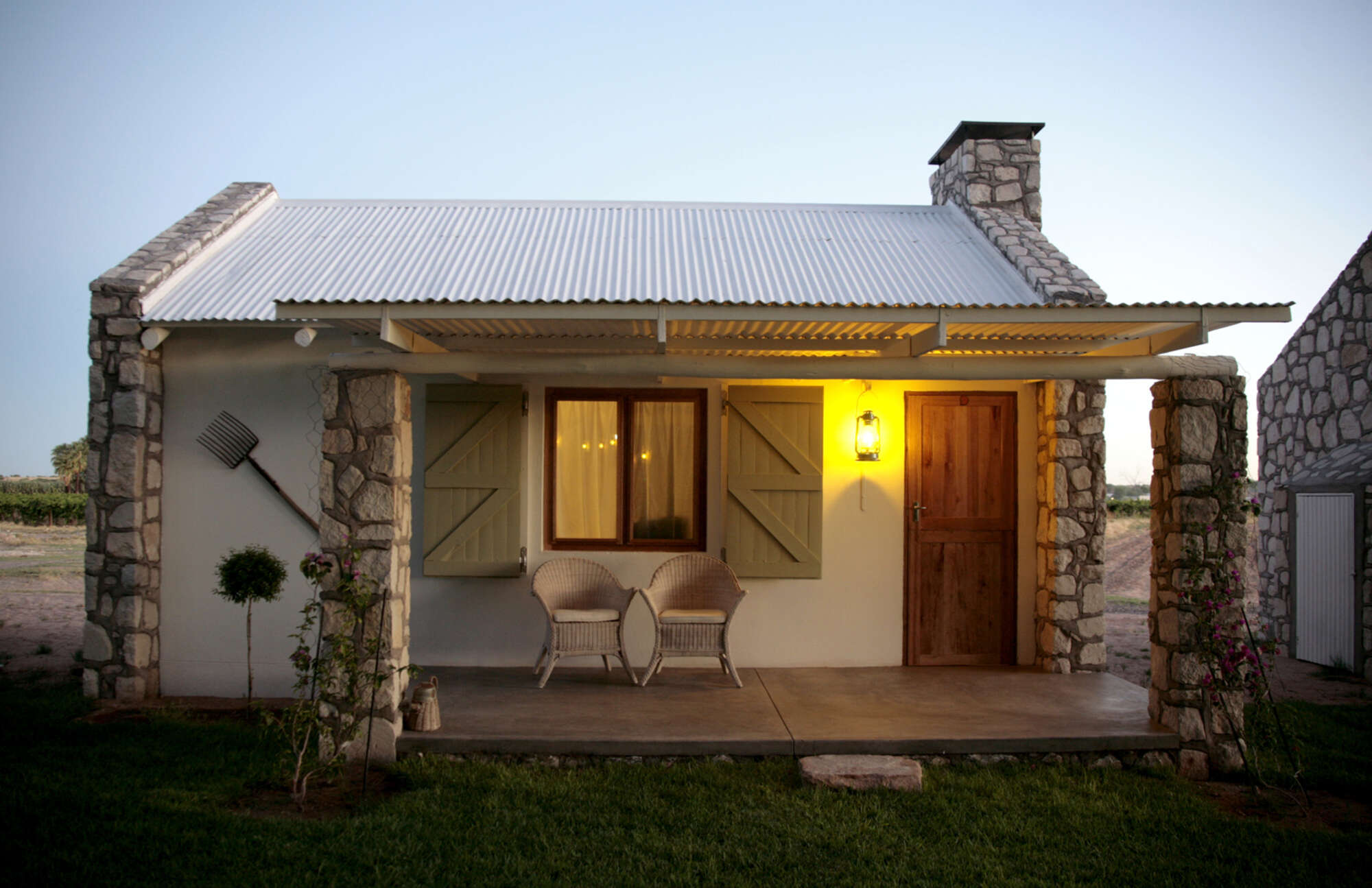
Kalahari Farmhouse
Kalahari Farmhouse, located in Stampriet has comfortable chalets in the gardens of an old farmhouse.
When to go to Southern Namibia
Our month by month guide: What it's like to visit Eningu Clayhouse in Southern Namibia
Jan
Feb
Mar
Apr
May
Jun
Jul
Aug
Sep
Oct
Nov
Dec
Namibia in January
January is at the heart of Namibia’s rainy season. However, as you’d expect from a country dominated by desert and semi-desert environments, the rains are often (but not always) weak and usually quite localised. Some days will be clear, the strong sun raising temperatures to around 30ºC/86ºF; on others humidity and clouds build, sometimes culminating in spectacular thunderstorms. In extreme cases, these generate flash-floods which race down the beds of ephemeral rivers.
Across the country, the greening landscape makes a refreshing change, especially in desert areas. Many birds are in full breeding plumage and migrant species are here in force. In the north, where the rains are more reliable, the abundant water and food allows wildlife to disperse, making it trickier to spot.
- Variable weather: clear, hot & dry, or cloudy & humid with some rain
- Occasional, highly localised thunderstorms
- Many animals with young; birdlife at its most spectacular
- Wildlife dispersed & harder to see, especially in Etosha & the Caprivi
- Very few tourists (apart from the New Year) so rates mostly low
Our view
This is not a great time to visit
Weather in January
Namibia in February
February is the wettest month, but as Namibia is dominated by deserts, the rains are often weak and patchy. The variation in weather across Namibia is significant, too; the central highlands and Caprivi can see some heavy rain. More typically, some February days are clear with a hot, strong sun; others are cooler as cloudy skies build and, sometimes, culminate in short, spectacular thunderstorms. Occasionally these generate flash-floods, bringing ephemeral rivers to life and making travel more challenging.
Across the country, the landscape feels green and alive; insects and smaller animals are more easily seen, and many birds and animals are raising their young. However, small pools in the bush and thicker vegetation can make it hard to spot the wildlife.
- Variable weather: clear, hot & dry or cloudy & humid with some rain
- Occasional localised thunderstorms meander over the landscape
- The bush feels alive; birdlife is at its most spectacular
- Wildlife in Etosha & Caprivi is dispersed & harder to see
- Few tourists, so rates usually at their lowest
Our view
This is not a great time to visit
Weather in February
Namibia in March
March usually sees Namibia’s main rains tailing off, although actual precipitation varies hugely across the country and can be unpredictable from day to day. Many days will be clear, with a strong sun driving temperatures up. On others, clouds will build, and the late afternoon may see a short, spectacular thunderstorm. Such deluges reduce in both frequency and volume as the month progresses.
Across the country, landscapes are often vivid: a “green and pleasant land”. Many birds and animals are finishing raising their young, so smaller animals and insects are in evidence. In the north, where rains are generally heavier, pools in the bush and thicker vegetation can make it difficult to spot larger animals.
- Variable weather: clear, hot & dry or cloudy & humid with some rain
- Afternoon thunderstorms less common as March progresses
- Animals looking sleek and well-fed, after 3–4 months of plenty
- Wildlife in Etosha & Caprivi is dispersed & harder to see
- Few tourists visit during March, so rates often low
Our view
A good time to visit, with pros & cons
Weather in March
Namibia in April
Typically, April is dominated by dry weather; there’s an ever-decreasing chance of rain. Temperatures are now below their peak and continue to fall. Even so, days remain pleasant and warm, but there might be a slight chill in the air at night. The rains usually leave many parts of the country verdant and green, so animals are in fantastic condition – often with fast-growing young in attendance.
With the dust washed out of the atmosphere, photographers make the most of clear air, spectacular landscapes and healthy animals. Stargazers will have clearer night skies as the month progresses. In the game parks of Northern Namibia, water and food remain in plentiful supply, so finding big game can prove trickier than later in the year.
- Becoming drier &, especially at night, also cooler
- Few visitors, except around Easter, so rates remain low
- Wildlife in Etosha & Caprivi remains relatively hard to see
- Migrant birds have started to leave
- Fresh, clean air and often green, verdant landscapes
Our view
A good time to visit, with pros & cons
Weather in April
Namibia in May
By May, Namibia is usually drying out fast as the rains have ended. If they’ve been good, then the land remains green, but wildlife starts to congregate at more permanent water sources. Over much of the country the air quality and clarity can be amazing, making this an ideal month for photography.
Typical days are warm, with crisp, clear mornings and clear blue skies. Evenings are usually cool, and temperatures may dip below 10ºC (50ºF) overnight. Many lodges still charge “low season” prices, although with Namibia’s increasing popularity in recent years, some have started to introduce higher “shoulder season” rates.
May’s good-value rates, increasingly good wildlife sightings, beautiful landscapes and crystal-clear air combine to make this one of our favourite months in Namibia.
- Lovely weather: dry, warm days & cool nights
- The country is drying out although many landscapes remain green
- Fantastic air clarity – ideal for keen photographers
- Visitor numbers are often still low, mirrored by lodge rates
- Wildlife is starting to congregate more around remaining water
Our view
A very good time to visit
Weather in May
Namibia in June
Namibia is dry again. Skies are blue and usually largely cloudless. Days are lovely: warm and dry; nights are cold, sometimes below freezing in the desert. Most swimming pools in Namibia are always outdoors, making them too cold for all except the very dedicated.
Take a warm hat and gloves for game drives, where dawn and dusk will feel particularly chilly. In the north, especially Etosha, wildlife viewing is now into its dry-season pattern, focusing around the waterholes – though the park is still not busy.
Photographers come for superb air clarity, with minimal dust or smoke in the air. Historically, June rates have been low. However, with Namibia’s increasing popularity many lodges now count it amongst their “high-season” months, and request higher prices.
- Clear, bright days with blue skies; cold nights, mornings & evenings
- Great air quality, especially welcome for photographers
- “Shoulder season” for some lodges: lodge rates moderate
- Wildlife gravitates to waterholes, making game-viewing productive
- Some greenery in the landscape, depending on the last rains
Our view
A very good time to visit
Weather in June
Namibia in July
Reliably warm daytime temperatures (upwards of 20ºC/70ºF) and good wildlife sightings make this a popular month to visit Namibia. Rain would be very unusual indeed and clear skies make for great photographs. Once the sun sets, though, temperatures cool rapidly bringing cold nights that may dip below freezing in the desert. Be prepared: dress in layers and expect early-morning and late-afternoon drives, and anywhere coastal, to be cold.
As the land dries and vegetation shrivels, game congregates beside drinking water: Etosha’s waterholes are busy with animals. Across the country, lodges charge “high season” rates; many are fully booked a year or more in advance, especially during European school holidays (from the latter half of July to late August).
- Dry days, warm in the sun, with crisp, cold nights
- Cloudless skies: July is usually superb for stargazing
- The beginning of European school holidays so more families travelling
- Peak season: so high rates and many lodges fully booked far in advance
- A fantastic time of year for wildlife watching, particularly in Etosha
Our view
A very good time to visit
Weather in July
Namibia in August
August is the height of Namibia’s “winter”. Expect cloudless skies and plenty of warm sun in the day, but nights down to freezing in the desert. Dress in layers and bring warm clothes (including hats and gloves) for chilly starts and evenings. Only the hardiest even contemplate using outdoor pools.
It’s 3–4 months since any rain, so the land is dust-dry and much vegetation is golden brown. Many landscapes appear sparse and harsh. Wildlife congregates around available water sources, helping to guarantee good animal sightings.
Namibia is never really “busy” by the standards of Europe or the USA, but August is the most popular time to visit, especially for families. Book early (over a year in advance) if you want to stay at the best lodges.
- Dry days, warm in the sun; cold mornings, evenings & nights
- Cloudless skies in the day; spectacular stars at night
- Busy by Namibian standards: family rooms in particular demand
- Peak season: so high rates and many lodges fully booked far in advance
- A fantastic time of year for wildlife watching, particularly in Etosha
Our view
Fantastic: the very best time to visit
Weather in August
Namibia in September
September is a month of blue, cloudless skies and fantastic wildlife viewing. Rain is almost unheard of. As the month progresses, the days and nights get warmer. In some areas, daily maximums hit around the low 30s Celsius, although low humidity ensures this feels comfortable. The contrast makes the nights seem very cold. The air is becoming dustier, occasionally augmented by smoke from fires – so becoming hazy for photographic purists.
In the national parks, animals congregate around remaining water sources – making September one of the best months for game viewing. Hence it’s one of Namibia’s most popular months for visitors: a “high season” month that is often the time of choice for safari aficionados.
- One of the best months for wildlife viewing
- Warm days & cold nights, with temperatures rising during the month
- Many plants have faded from green to golden brown
- Air can be hazy – with dust & sometimes smoke
- High season rates; many lodges & camps are full 9 months in advance.
Our view
Fantastic: the very best time to visit
Weather in September
Namibia in October
Namibia is usually at its hottest and driest in October. Temperatures build as the month progresses; towards the end, daily highs may exceed 40ºC/100ºF, though with humidity close to zero, even this rarely feels oppressive.
In exceptional years, isolated rain showers may fall in late October. More usually, the end of the dry season sees wildlife watching at its best, particularly in Etosha. The place feels like a desert as spectacular herds of thirsty animals gather around the available water. October is popular amongst wildlife enthusiasts and commands peak-season prices, even if dust and smoke may make the air hazy, challenging photographers. Visitor numbers can fade towards the end of the month, allowing a window for last-minute bookings.
- Probably the most spectacular month for wildlife-viewing in Etosha
- Hot and dry: much of the country feels like a desert
- The air can be hazy with dust & smoke
- It’s peak time to visit, so expect high season rates
- Lodges & camps are full, especially early in October
Our view
A very good time to visit
Weather in October
Namibia in November
November is always a bit unpredictable: sometimes dry and hot; sometimes cloudier and cooler. Typically, mornings are hot and cloudless and clouds appear in the afternoon. Humidity builds and eventually breaks, resulting in spectacular thunderstorms that bring convection rainfall in late afternoons. Such storms are typically sparsely distributed and highly local – being completely absent from desert areas, for example. Places that do get good rain will flush green, with a tangible feeling of new life softening the landscapes. Many mammals give birth to their young.
Once any rains come, wildlife dissipates in search of food, and game viewing in Etosha becomes harder. Conversely, this is a great time for birdwatchers, with migrant species in breeding plumage.
- A very interesting, variable month, depending on the rains
- With rains come an amazing explosion of both vegetation & new life
- Wildlife viewing better in Damaraland than Etosha if it has rained
- Shoulder season: mid-range rates offer great value
- Away from the Namib, showers are more likely later in the month
Our view
A good time to visit, with pros & cons
Weather in November
Namibia in December
December is the first “proper” month of Namibia’s rainy season, and one of its hottest. Clear mornings give way to building clouds and, with luck, the occasional short, spectacular thunderstorm: refreshing and cleansing. These are often highly localised and generally warmly welcomed: most Namibians love rain!
Rains clear the air of dust. Even relatively short showers enable plant life to erupt, carpeting this thirstland in green and providing food for the young animals which abound. Animals disperse widely, which can make game viewing challenging. Many birds are breeding and so sporting their most colourful plumage.
Christmas and the New Year fall within local “summer holidays” – so places to stay can be surprisingly busy, especially in and around coastal towns, where temperatures are cooler.
- Hot and humid; sometimes refreshed by cooling showers
- Landscapes flushed green if/where there has been rain
- A tangible life and energy amidst this often green & pleasant land
- Very photogenic: blooming deserts amidst crystal-clear air
- Best time for birdwatchers; larger animals harder to spot
Our view
This is not a great time to visit
Weather in December

Looking for inspiration on where to travel next?
Visit our trip chooser to explore your options and find inspiration for your perfect African adventure
Inspire me